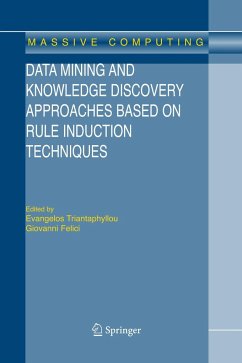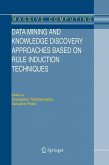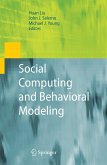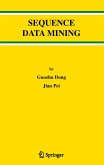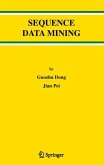This book will give the reader a perspective into the core theory and practice of data mining and knowledge discovery (DM and KD). Its chapters combine many theoretical foundations for various DM and KD methods, and they present a rich array of examples - many of which are drawn from real-life applications. Most of the theoretical developments discussed are accompanied by an extensive empirical analysis, which should give the reader both a deep theoretical and practical insight into the subjects covered.
The book presents the combined research experiences of its 40 authors gathered during a long search in gleaning new knowledge from data. The last page of each chapter has a brief biographical statement of its contributors, who are world-renowned experts.
2. Some Background Information 49 3. Definitions and Terminology 52 4. The One Clause at a Time (OCAT) Approach 54 4. 1 Data Binarization 54 4. 2 The One Clause at a Time (OCAT) Concept 58 4. 3 A Branch-and-Bound Approach for Inferring Clauses 59 4. 4 Inference of the Clauses for the Illustrative Example 62 4. 5 A Polynomial Time Heuristic for Inferring Clauses 65 5. A Guided Learning Approach 70 6. The Rejectability Graph of Two Collections of Examples 72 6. 1 The Definition of the Rej ectability Graph 72 6. 2 Properties of the Rejectability Graph 74 6. 3 On the Minimum Clique Cover of the Rej ectability Graph 76 7. Problem Decomposition 77 7. 1 Connected Components 77 7. 2 Clique Cover 78 8. An Example of Using the Rejectability Graph 79 9. Conclusions 82 References 83 Author's Biographical Statement 87 Chapter 3 AN INCREMENTAL LEARNING ALGORITHM FOR INFERRING LOGICAL RULES FROM EXAMPLES IN THE FRAMEWORK OF THE COMMON REASONING PROCESS, by X. Naidenova 89 1. Introduction 90 2. A Model of Rule-Based Logical Inference 96 2. 1 Rules Acquired from Experts or Rules of the First Type 97 2. 2 Structure of the Knowledge Base 98 2. 3 Reasoning Operations for Using Logical Rules of the First Type 100 2. 4 An Example of the Reasoning Process 102 3. Inductive Inference of Implicative Rules From Examples 103 3.
The book presents the combined research experiences of its 40 authors gathered during a long search in gleaning new knowledge from data. The last page of each chapter has a brief biographical statement of its contributors, who are world-renowned experts.
2. Some Background Information 49 3. Definitions and Terminology 52 4. The One Clause at a Time (OCAT) Approach 54 4. 1 Data Binarization 54 4. 2 The One Clause at a Time (OCAT) Concept 58 4. 3 A Branch-and-Bound Approach for Inferring Clauses 59 4. 4 Inference of the Clauses for the Illustrative Example 62 4. 5 A Polynomial Time Heuristic for Inferring Clauses 65 5. A Guided Learning Approach 70 6. The Rejectability Graph of Two Collections of Examples 72 6. 1 The Definition of the Rej ectability Graph 72 6. 2 Properties of the Rejectability Graph 74 6. 3 On the Minimum Clique Cover of the Rej ectability Graph 76 7. Problem Decomposition 77 7. 1 Connected Components 77 7. 2 Clique Cover 78 8. An Example of Using the Rejectability Graph 79 9. Conclusions 82 References 83 Author's Biographical Statement 87 Chapter 3 AN INCREMENTAL LEARNING ALGORITHM FOR INFERRING LOGICAL RULES FROM EXAMPLES IN THE FRAMEWORK OF THE COMMON REASONING PROCESS, by X. Naidenova 89 1. Introduction 90 2. A Model of Rule-Based Logical Inference 96 2. 1 Rules Acquired from Experts or Rules of the First Type 97 2. 2 Structure of the Knowledge Base 98 2. 3 Reasoning Operations for Using Logical Rules of the First Type 100 2. 4 An Example of the Reasoning Process 102 3. Inductive Inference of Implicative Rules From Examples 103 3.

